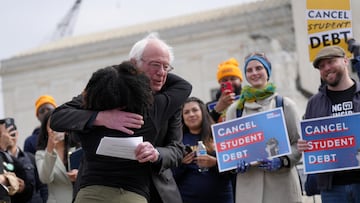POLITICS
What is the difference between federal and private student loans?
Millions of student debt holders are awaiting the decision of the US Supreme Court to rule on the legitimacy of President Joe Biden’s debt cancellation.

There are two methods of applying for student loans; federal and private. There are a lot of differences that are important to consider when applying for either, as well as for those who have graduated and are claiming debt forgiveness.
Key differences in student loans
Federal student loans are provided by the Department of Education, whereas private student loans are offered by banks, credit unions, and other private financial institutions.
To apply for federal student loans, you need to complete the Free Application for Federal Student Aid (FAFSA). Private student loans typically have their own application processes, which may include a credit check and income verification.
Federal student loans generally have fixed interest rates set by the government. Private student loans, on the other hand, have interest rates that are determined by the lender and may be fixed or variable. Private loan interest rates are typically based on creditworthiness, so borrowers with better credit scores may receive more favorable rates and more flexible limits compared to federal loans.
Some federal student loans, such as Direct Subsidized Loans, do not accrue interest while you’re in school or during deferment periods. Direct Unsubsidized Loans and private student loans, however, accrue interest from the time they are disbursed. This makes paying both back a challenge, hence the student debt crisis that came to a-head this year.
Federal student loans offer various loan forgiveness and discharge programs, such as Public Service Loan Forgiveness (PSLF) and Teacher Loan Forgiveness. Private student loans generally do not offer the same level of forgiveness or discharge options.
What does the difference mean for student debt relief plans?
One of the lawsuits preventing American students from accessing the long-promised debt forgiveness is tied to private student debt. Plaintiff Myra Brown is suing the Department of Education because her $17,000 of debt is privately held in a way which means she is not eligible for the $20,000 of debt cancellation. All students with their debt from federal loans are eligible.
A resolution from the Supreme Court is expected next month.
Currently, private student loans are estimated to make up around 8%, just over $131 billion, of all outstanding student loan debt, now over $1.7 trillion.






